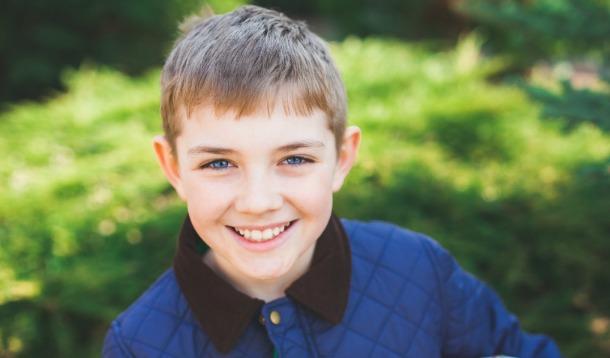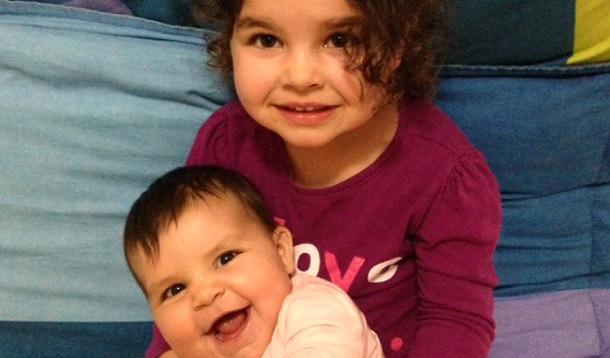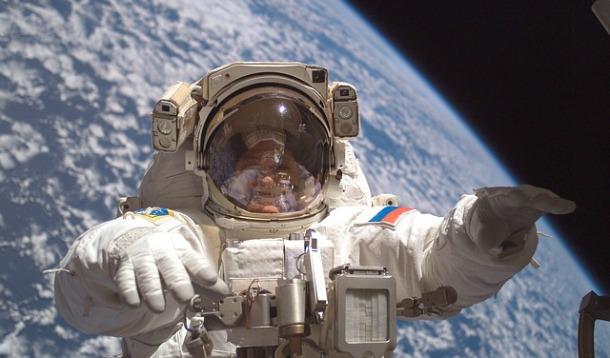
"We are in this class because we are not as smart as the other kids.”
Wrong, wrong, wrongy, wrong, wrong!
I love working with students with learning disabilities. It is one of my favourite roles as a teacher and I’ve been lucky enough to work with this population for many years.
It can be a tricky group to manage, a class stocked with very diverse needs, lots of different personalities and sometimes more than a few kids pretty disgruntled with the whole school system. And it can be a juggling act for the teacher, as a method that works well for one student with a learning disability is often ineffective for the next. I used to dream of finding that one perfectly successful method of teaching the struggling student, but, as with any other group, kids with learning disabilities comprise a diverse bunch and no single method works for all.
So, can these kids achieve success in life? Without the magic cure all, where are they headed?
Enter an assembly of successful entrepreneurs who have come out to say that, not only did they struggle with learning disabilities in school, but also that they view those disabilities as a gift.
Richard Branson, billionaire head of Virgin, recently made headlines sharing his struggles with learning disabilities and by encouraging other struggling students to turn their negatives into positives. Award-winning journalist, Anderson Cooper struggled with dyslexia at a young age. Three of the Shark Tank stars, Daymond John, Barbara Corcoran, and Kevin O’Leary, have all spoken publicly about their experiences with dyslexia. The founders of Ikea, Kinkos and JetBlue all have identifiable learning disabilities.
Other recognizable successes who endured learning struggles? Thomas Edison, Magic Johnson, Walt Disney, Albert Einstein, Hans Christian Anderson… the list goes on. Perhaps there is a link between learning disabilities and entrepreneurial spirit?
Now most of the kids in my classes wouldn’t agree that their challenges are a gift – just yet. School can be remarkably tough for kids with learning disabilities – especially before those learning differences are identified and understood by the teachers.
But here’s one thing I have noticed in my students: when there is a weakness in one part of the brain, it is countered by a strength (or many strengths) in other parts. I had one fabulous kid, who really struggled with reading, but had an astounding ability to recall information he received audibly. Is there such thing as a phonographic memory? If so, he had one! So many of my students show exceptional charisma, boundless creativity and impressive energy. I’ve had students who are whizzes at computers and media, incredible artists, amazing athletes, great at design and construction – obviously a student is so much more than their ability to manipulate letters or numbers.
And here’s one thing I have noticed about life. If you want to be great at something, it takes hard work. Short cuts will only get you so far. Time and effort really is the key to success. And that is something many kids with learning disabilities learn early. They need to put way more time and effort into either mastering the skills impacted by their disability, or learning how to work around those skills. Students with academic challenges usually understand the value of hard work long before their peers.
When I’m lucky enough to teach a group of young people with learning disabilities, we start the school year by discussing why they have been put into a “special” class. I’m always surprised by how many of my students do not know why they are in my room. Inevitably, one brave student will say something like, “We are not as smart as the other kids.”
And that’s where the learning about their abilities really kicks off. The very definition of learning disability insists that a student be average or above average intelligence. Do these kids have brains that work differently? Absolutely. Do they have a unique profile of strengths and needs? Definitely! Do they need teachers to find a method of teaching that works with their individual brain chemistry? Unquestionably! Are they less intelligent other kids? No way! In fact, I’ve worked with countless kids who have been identified as both gifted and learning disabled.
Depending on the age of my group, I often assign an early project around finding a person who struggled in school and went on to achieve greatness. There are so many inspirational stories and no limits as to what my students can achieve.
It seems, often the greatest limitations are the ones we put on ourselves. I love seeing so many successful people discuss their challenges. A learning disability is not something to be ashamed of; it’s a challenge to face head on and maybe even a gift of strength, resilience and creativity.
Image Source: kaboompics
![]() RELATED: This Mom and Son Train To Break Marathon Record Together
RELATED: This Mom and Son Train To Break Marathon Record Together

Not three seconds after my youngest daughter entered the world, the nurse exclaimed, “she’s a big girl!” And with that, a lifetime of being judged on her appearance began.
I am blessed and extremely grateful to be the mom of two wonderful girls. My daughters are smart, kind, and funny. OK, so the youngest is only six-months old, but I can tell by the look in her eyes that she is already smart, kind, funny and, I suspect, rather sassy. My daughters are also tall. Their measurements fall outside the scope of typical growth charts. My two-year-old wears size six clothing and my six month old wears size 12-18 months.
Every day, often multiple times a day, my eldest daughter is part of, or overhears, a conversation that references her size.
“How old is your daughter?”
“Nearly three,” I say. (saying two seems really ridiculous, although she still has a few months until her birthday)
“Oh my! She’s so big.”
When others ask her how old she is, they often look to me for confirmation, assuming she’s mistaken about her own age. My sweet girl is head and shoulders over most of her peers and looks slightly silly crowded into the average pre-school riding toy. Her younger sister is tracking to be even taller.
Now I know this isn’t a terrible problem, especially since my girls are happy and healthy. What more could a parent want? But I do wonder what the long-term effects will be. Several times a day, they are reminded that the first thing anyone notices about them is their appearance and the first thing commented on is a part of their appearance that doesn’t fit into the norm.
So how do I raise my big, beautiful girls to have big, beautiful self-esteems? I want them to be proud of who they are and never be held back by their feelings about their appearance.
With this goal in mind, I put on my teacher hat and began to think about how I foster healthy self-esteem in my students. Every day at work I come into contact with hundreds of kids, so many of whom have sadly grown up being judged on their appearance. These kids are their own worst judges, focusing on what they deem to be negative and longing to look like someone else. Can teachers, parents, and peers help kids to see themselves more positively? They sure can.
Enter Dove’s Self-Esteem Project. Dove is on a mission to ensure the next generation grows up enjoying a positive relationship with the way they look, helping them reach their full potential. Um… AMAZING!
Dove’s Self-Esteem Project confronts media messages and asks students to explore some of the technology used to transform real people into the shiny, airbrushed images people compare themselves to. It explores the obsession with body talk (continually noticing and commenting on our own appearance and the appearance of others). The program also challenges kids to explore their tendency to compare their looks to others and to rate their traits as better or worse than that of someone else.
I hope educators choose to join in on the mission.
For a while, the education system in Canada believed that the best way to instill confidence in kids was to be abundant with praise, even when it wasn’t warranted. Every paper got an A for effort and a gold star. Teachers were even encouraged not to use red pen to mark, as it could be damaging to a child’s ego. Thankfully, we have moved on from those days. Most teachers understand that surmounting challenges and achieving success through hard work is a far better way to grow students’ self-esteem, not to mention their resilience.

We also know that just telling a girl that she is pretty is not going to convince her to have a positive relationship with her appearance. Heaping compliments onto my daughters isn’t going to counter the effects of a world that constantly comments on their size.
By not talking about differences, we give them more power. Let’s keep the conversation going and teach kids to celebrate the things that make them unique.
What we need to do, as parents and educators, is guide our children in understanding where their self-perceptions come from and help them look and think critically about all the messages regularly bombarding their brains. Dove’s program does a stellar job of that.
The downloadable resources for teachers encourage educators to run a one-hour body confidence workshop, or a more in depth five-session workshop with students.
The program easily dovetails into the curriculum, hitting the requirements for critical literacy, media awareness, oral language, presenting and supporting arguments, drama activities, and the list goes on.
Each topic comes with a straight-forward teaching guide. The lessons are supported by YouTube videos and innovative images (like the images you see in this post), designed to challenge students’ thinking and create great discussion. There are worksheets that elicit thoughtful responses from kids and ask them to reflect on their own perceptions about body image, fitting in and feeling confident.

Honestly, everything a teacher needs to run the program is there—and it is GREAT! Engaging, thought provoking lessons that may just have a significant impact on the kids who participate in them. Oh, and did I mention it’s all FREE?
Right now, I’m enjoying the glories of maternity leave and devoting my time to giving my girls a solid foundation of confidence to help them navigate this appearance-obsessed world. But I have to say, the more I explored Dove's Confident Me resources, the more excited I became to run this workshop with my students. I really believe in the goals of this program that it almost makes me want to return to work early...almost.
For generations, girls have been comparing themselves to others and striving to meet unobtainable ideals. But now, here we are, well into the new millennium and we can do better. Feminism has fought so many battles, our mothers, and their mothers before them have succeeded in improving things for women and girls – and we need to keep the momentum going. Let’s make a real difference for this generation of young people – girls and boys. Let’s find a way to #InspireConfidence in the kids we are all raising. With Dove’s program, we are taking a leap in the right direction.
Oh, and do me a favour? If you have the occasion to meet my big, beautiful daughters, hold back your comment on their size. I know that may be the first thing you see, but give it a moment and my girls will show you who they really are. My daughters are great—in so much more than just their stature.

This is proudly sponsored by our friends at Dove®
www.dove.ca

Wow, six women in a confined, high-pressure space for eight whole days and no one broke down weeping? No one got into a hair-pulling, scratching match? Not one woman called another a bitch? That sure is a leap forward for womankind. Sarcasm intended.
So, it seems that six female Russian scientists recently took part in an experiment to explore the possibility of an all-female space mission to the moon in 2029. Sounds exciting, right? It’s about time women were considered seriously for such a mission. But hold the phone here, people. Why did these women have to be sequestered in this experimental space?
Apparently the main goal of the project was to see if the women could actually get along together and could survive without all the comforts of home.
Experiment supervisor, Sergei Ponomaryov said, “We consider the future of space belongs equally to men and women,” Yep. Awesome. As our new Prime Minister, Justin Trudeau, explained, “It’s 2015.” It is high time for men and women to be represented equally in as many fields and arenas as possible.
Ponomaryov also stated, “We believe women might not only be no worse than men at performing certain tasks in space, but actually better.” Hmm. I’d prefer the comment without the built in incredulity about women’s ability to best a man, but okay, let’s go with it.
However, the Russian Space Program seems to have missed the mark here. Igor Ushakov, director of the Institute of Biomedical Problems, made a comment about how the experiment would be especially interesting because, “they say that in one kitchen, two housewives find it hard to live together.” Sigh.
Journalists were even more offensive, asking the women how they would cope for eight days without men and how they’d manage without make-up and chocolate. Le sigh.
Come on, 2015! Come on, Russia! Get your shit together. How about you focus not on if a female astronaut can survive an entire space mission without Pintrest and male hand-holding, but rather on the candidate’s physical and psychological readiness for the job.
When I did some digging, I found out that the Russian Space Program had conducted a similar experiment, in which six male candidates spent 520 days in a capsule. The focus of that experiment was far more on the men's ability to manage the isolation and stresses of the mission and far less on their ability to “get along”. I guess the feeling was men have an innate ability to act professional, where as the women may get catty, or tearful, or dear God, did they consider pre-menstral!? How could the women cope?
Oh yes, and then, there is a third experiment, with a mixed gendered team. That one ended poorly when two men got into a physical fight and one tried to kiss a woman. Sigh, sigh, a thousand times, sigh.
Perhaps the program would have more success if they provided out-of-this-world lip gloss and glittered space suits to the women participants and left all that science-y thinking stuff to the men. Or perhaps it is time to honour the individual's professionalism, attributes and achievements rather than highlighting their sex. Let's cut the sexist crap.
You would think those involved in the experiments would know better. You know the expression, "I'm not a rocket scientist"? Well these people are, in fact, rocket scientists! Seriously, we are talking about docking on a space station and travel to the moon. I say, we can only get to the future if we get our chauvinistic mindset out of the past. But, hey, don’t ask me. I’m just a girl.
Photo provided by Pixabay
![]() RELATED: Jennifer Lawrence Has The Balls To Go Along With Her Vagina
RELATED: Jennifer Lawrence Has The Balls To Go Along With Her Vagina